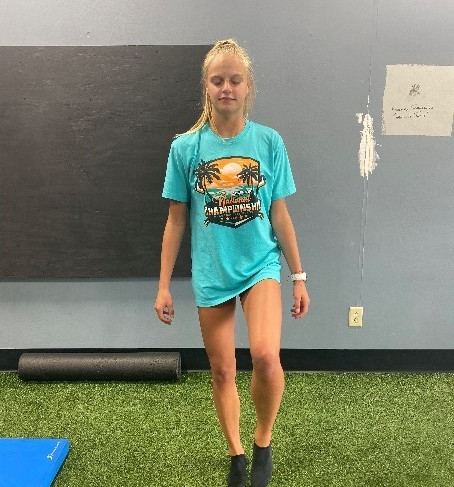
One of the most underutilized tools in injury prevention, sports performance, and overall health and wellness is the ability to balance. It’s a skill worth continually improving since it eliminates injuries such as ACL tears in the athletic population and fall risks in senior age groups. Indeed, persons without the ability to maintain a balanced standing position for at least five seconds have an increased susceptibility to injury.
Balance Test
The best way to test your balance is the one-legged stand test, ideally performed with and without eyes open. As we age, our balance will steadily decrease, even more so if one does not work on it. To accomplish this test, stand on one leg with eyes open and time how long you can stand without a significant weight shift or the other foot touching the ground. Perform test again, this time with eyes closed.
Where Does Your Balance Rank?
Perform the test as seen above and compare yourself to the average range for your age bracket shown below:

The Balance System Explained
Generally, an individual should be able to stand on one leg with eyes open for over 30 seconds and closed for around 10 seconds. A well-trained athlete should be able to balance with eyes shut closer to 20-25 seconds. If you are unable to, these are the three possible contributing factors that explain why:
1. Inner Ear/Vestibular System – Inside of your ear, you have a complex equilibrium system made of fluid, crystals, and receptors that allow you to know which way is up and which way is down. As gymnasts flip through the air, they must have a fully functioning vestibular system to provide the body with accurate information to land correctly.

2. Joints, skin, and muscles – Throughout our body, our joints, skin, and muscles have nerves and receptors that communicate back and forth with the brain. Trauma such as an ankle sprain decreases this communication, which is why individuals with ankle sprains have a more difficult time with balance tests compared to their healthy counterparts.

3. Vision – Our eyes allow us to observe the world around us. The visual system sends its observations through impulses to the two systems listed above to complete the whole balance system. This explains why it is so difficult to stand on one leg with your eyes closed compared to open.

If you want to prevent an injury or increase athletic performance, our training facility offers functional training workouts tailored to individuals and their needs. Workout plans include balance training, strength, and mobility exercises to help build a fully functioning body.
References:
About the Author:
Dr. Caleb Gorman graduated from Logan University in Chesterfield, Missouri in 2020. He has a passion for functional movement, rehabilitation, and sports performance. Dr. Gorman has extensive knowledge of the human musculoskeletal system as he served as an anatomy and neuroanatomy tutor at Logan University’s Cadaver Lab for over two years. Caleb’s treatment and assessment certifications include Active Release Technique (ART), Dynamic Neuromuscular Stabilization (DNS), Selective Functional Movement Assessment (SFMA), and Trigger Point Dry Needling.
Comprehensive Chiropractic & Sports Performance is your Complete Wellness Center. St. Louis turns to us for chronic pain relief, injury rehabilitation, and treatment for many other conditions. We believe that our health is our greatest asset. Any effort we make towards taking care of ourselves is valuable and necessary.







Commentaires